As a photographer, how many times have you wished you had a portable power source in remote locations? Whether for outdoor lighting or simply to power some tools, this 1,200 W power station might just be what you were wishing for.
Whether as photographers or even just as regular users of electronics, the accessibility of a power source can sometimes be a limitation for some of the things that we want to do. Whether it’s because we want to do them in places that are off the grid or because of some unexpected power interruptions, the lack of electricity can definitely interrupt with our activities. For photographers and filmmakers, this has even more weight. Thankfully, portable power stations are now available to bridge that gap.
Of course portable power stations are not just useful exclusively to creatives but we all very well know the implications of what having portable power sources can help us achieve. Whether it be to bring your studio lighting setup outdoors or to provide power to recharge our camera, smartphone, and laptop batteries for long-haul projects, having something you can carry around for that will always be a great option. Let’s take a look at what Ugreen’s PowerRoam 1200 has to offer.
The Ugreen PowerRoam 1200
Following Ugreen’s previous release of the PowerRoam 600, this bigger power station comes as an 11.5 kg (25.4 lbs) device made of a rigid steel structure encased in a hard plastic shell with rubber padding. The top panel consists only of a large handle that spans the entire length of the power station and serves as the only way to carry the relatively heavy power supply.
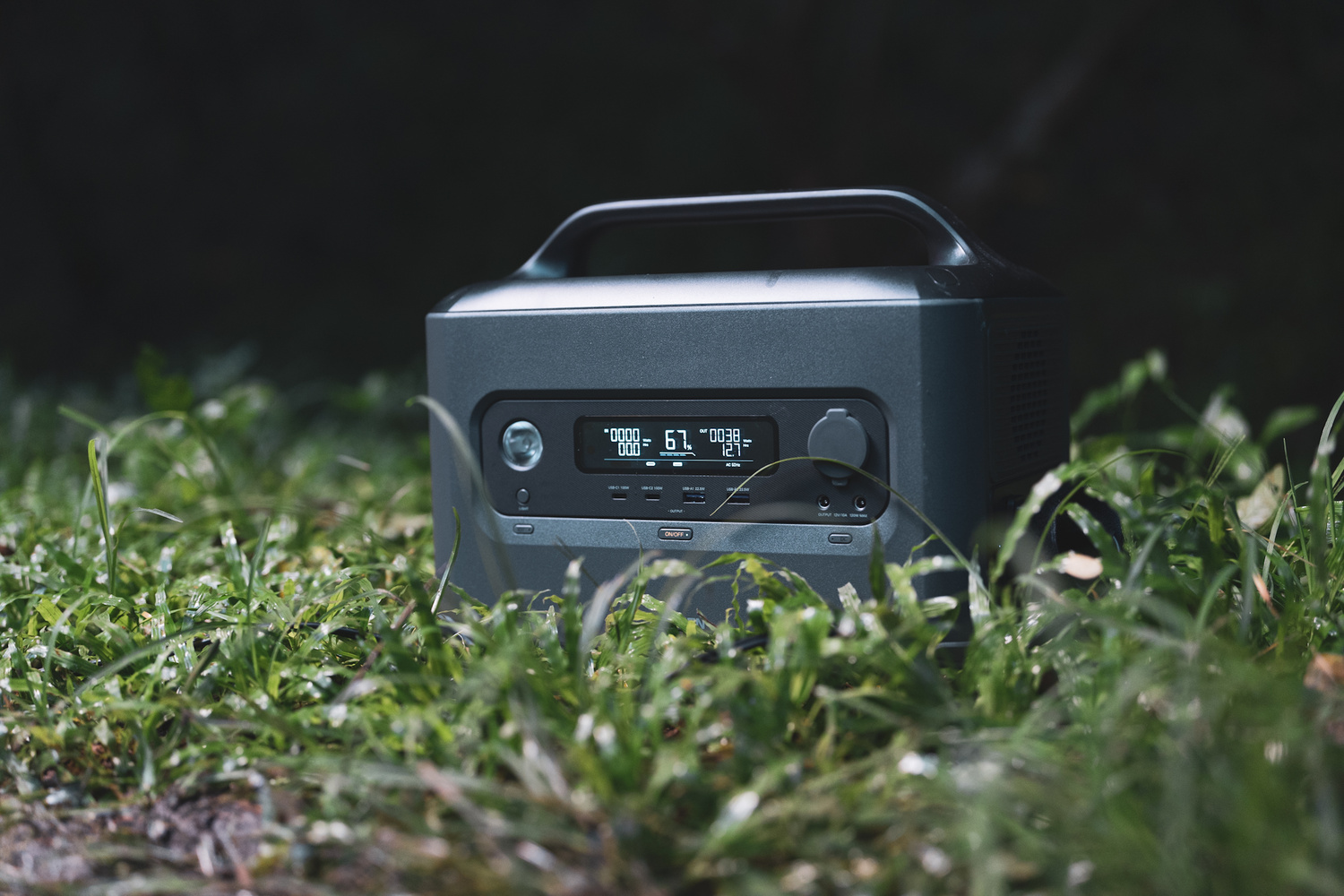
On the front panel is a 4.8 x 1.25 inch display that shows the battery percentage, input and output rates, as well as the time (in hours) to fully charge or fully drain the battery. On the left of the screen is a built-in emergency lamp, a power button for the lamp, and a function button for pairing the PowerRoam 1200 to a smartphone using the Ugreen mobile app.

Below the screen are two USB-C and two USB-A ports along with the overall on/off button for the device. To the right of the screen is a cigarette lighter-type port along with two other DC ports followed by a dedicated button to activate the DC output.

On the left side is a 6.5 x 3.5 inch vent for the built-in fan with a flip out door that reveal the charging input ports (AC and solar) and safety modules on top. On the other side is a similar 6.5 x 3.5 inch vent on top of the 6 AC outlets and the AC output button.

Charging and Input
The Ugreen PowerRoam 1200 has three options when it comes to charging. The fastest of the three would, of course, be AC charging through the supplied power cable. It is a considerably convenient fact that AC charging on this device does not require the use of other adapters that would otherwise be an extra bulk to carry around. This power station comes in two versions, a 110 V version for areas such as America and Japan, and a 220 V version for other regions. Charging with AC can be as quick as 1.5 hours through the 1,200-watt input or roughly about 70% capacity in 1 hour.
 The PowerRoam 1200 is also compatible with up to two 200 W solar panels with a combined capacity of 400 watts. Charging with the solar panels supposedly take 4 hours; however, this is greatly affected by the weather. Charging on a day with intermittent clouds took about 6.5 hours, but of course, that is highly variable based on current weather conditions.
The PowerRoam 1200 is also compatible with up to two 200 W solar panels with a combined capacity of 400 watts. Charging with the solar panels supposedly take 4 hours; however, this is greatly affected by the weather. Charging on a day with intermittent clouds took about 6.5 hours, but of course, that is highly variable based on current weather conditions.
The power station can also be charged using a car’s cigarette lighter port. The charging rate depends on the output rate of the available port on the vehicle. A 12 V port can fully charge the power station’s battery after a 12-hour drive, while a 24 V port can have it charged up in 6 hours. The feasibility of charging using the car port depends on the length of the drive. However, this should be perfectly helpful in re-charging the battery in-between uses to replenish what has been used.
Output Options and Ports
Output options are divided into three modules, which are the USB ports, the DC ports, and the AC ports. The two USB-C ports are both capable of up to 100 watts charging simultaneously, and the two USB-A ports can do up to 22.5 watts each. These four ports alone already provide options for charging camera batteries, smartphones, tablets, and even USB-C charging capable computers.
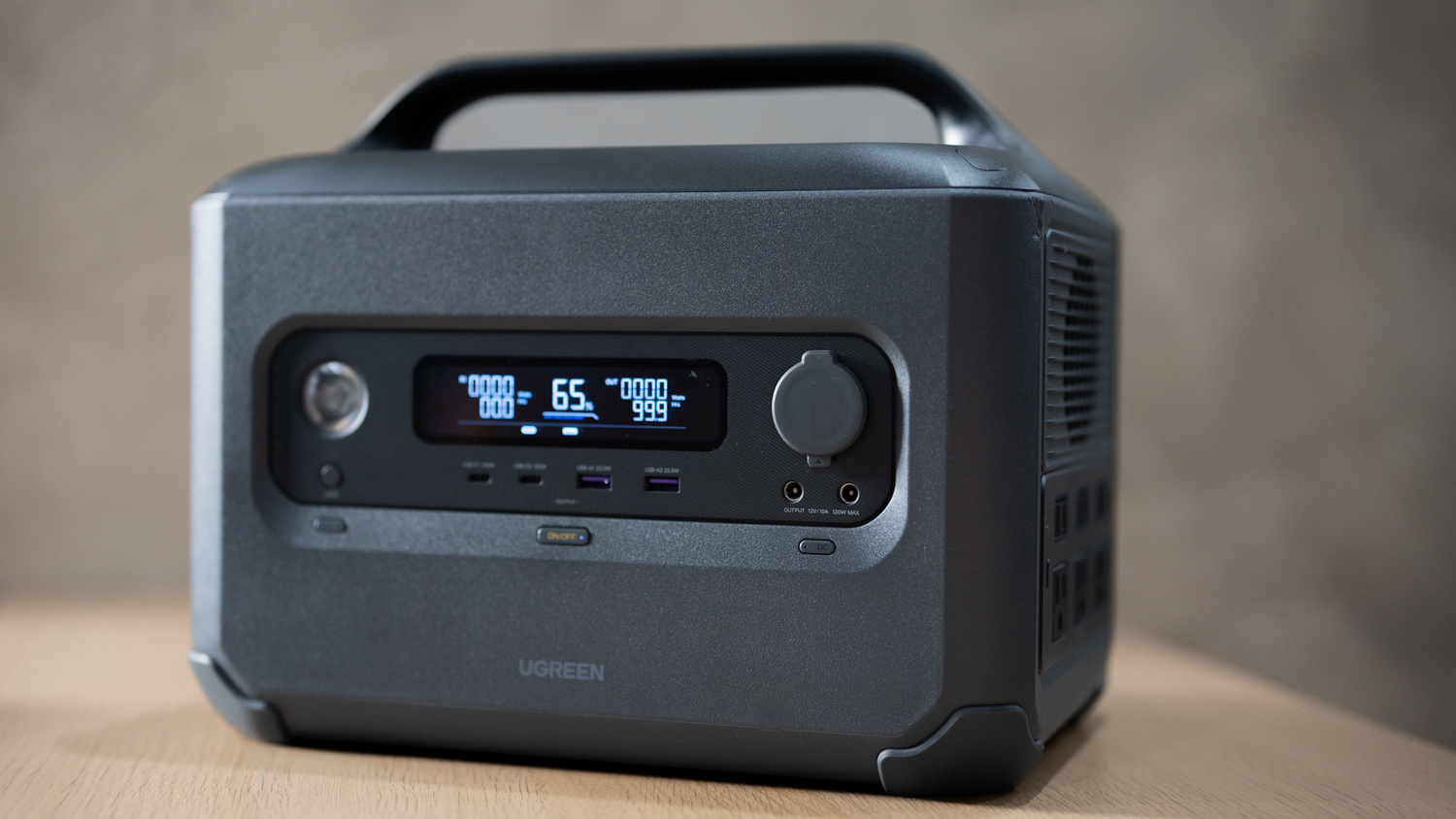
The cigarette lighter port share a capacity of 120 watts total with the two other DC ports that can be used with the supplied cables for charging with compatible devices. The 6 AC outlets are divided into 3 type A (flat, ungrounded) and 3 type B (flat, with ground) compatible ports. All these AC ports share a combined total capacity of 1,200 watts altogether.
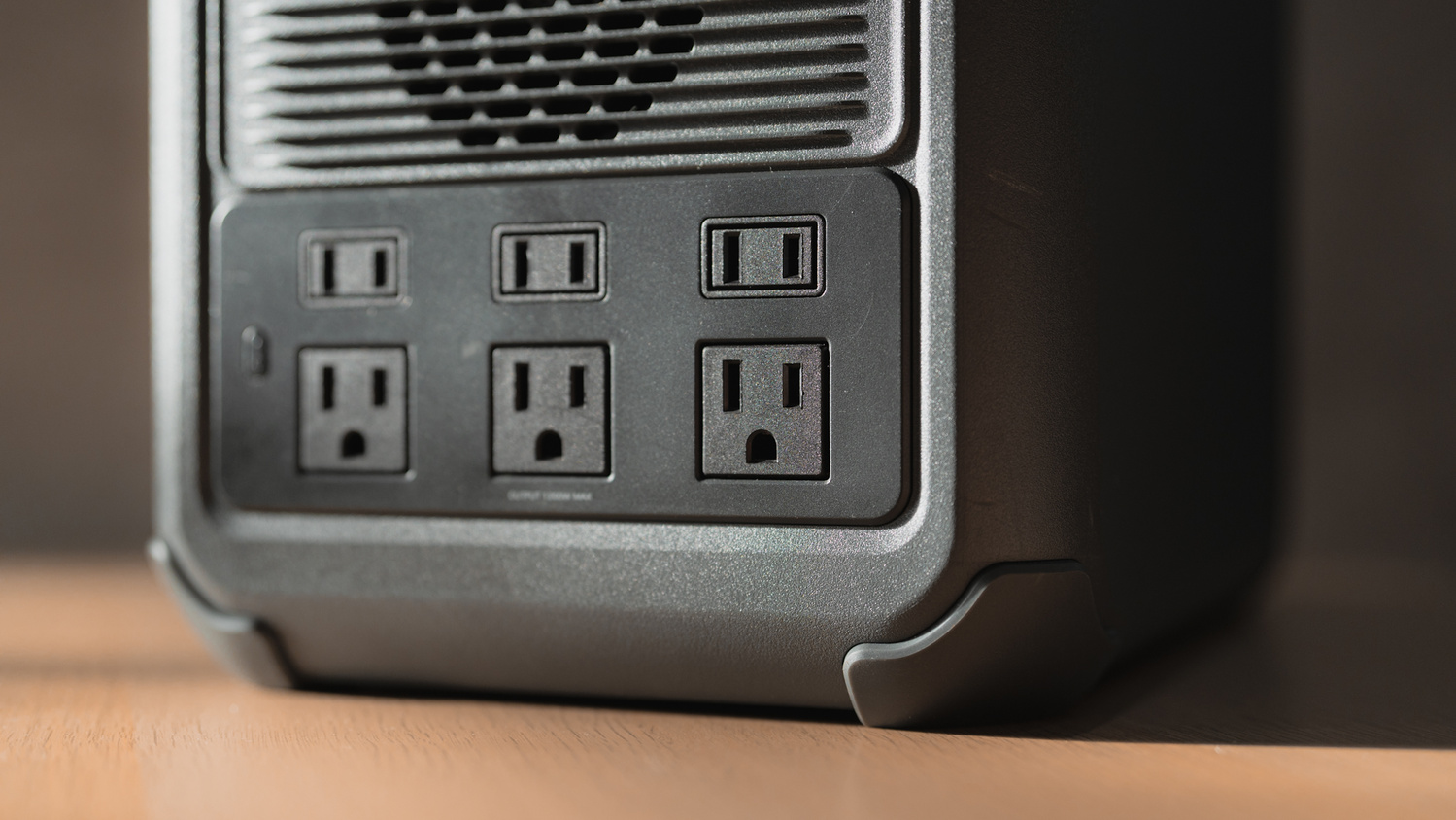
Output and Battery Capacity
The PowerRoam 1200 carries a total of 1,024 watt-hours of power. With the 13 ports in total and the array of possibly compatible devices, how sufficient it is will be entirely dependent on what the power station will be used on. However, in general, 1,024 watt-hours is a considerable amount. In its recommended default state, it can supply up to 1,200 watts at one time to a single device or divided to many devices. It is also capable of momentarily boosting the capacity to up to 2,500 watts using the U-turbo mode, which then allows the use of higher-power devices and tools, of course, with the consequence of draining the power reserve much more quickly.
Application and User Experience
Considering that this tool is something that can be used on any device and any activity that requires power, there are countless ways on how it can be useful. However, when it comes to using it as photographers and/or filmmakers, there are quite a number of notable benefits that having a portable 1,024 watt-hour battery can offer.
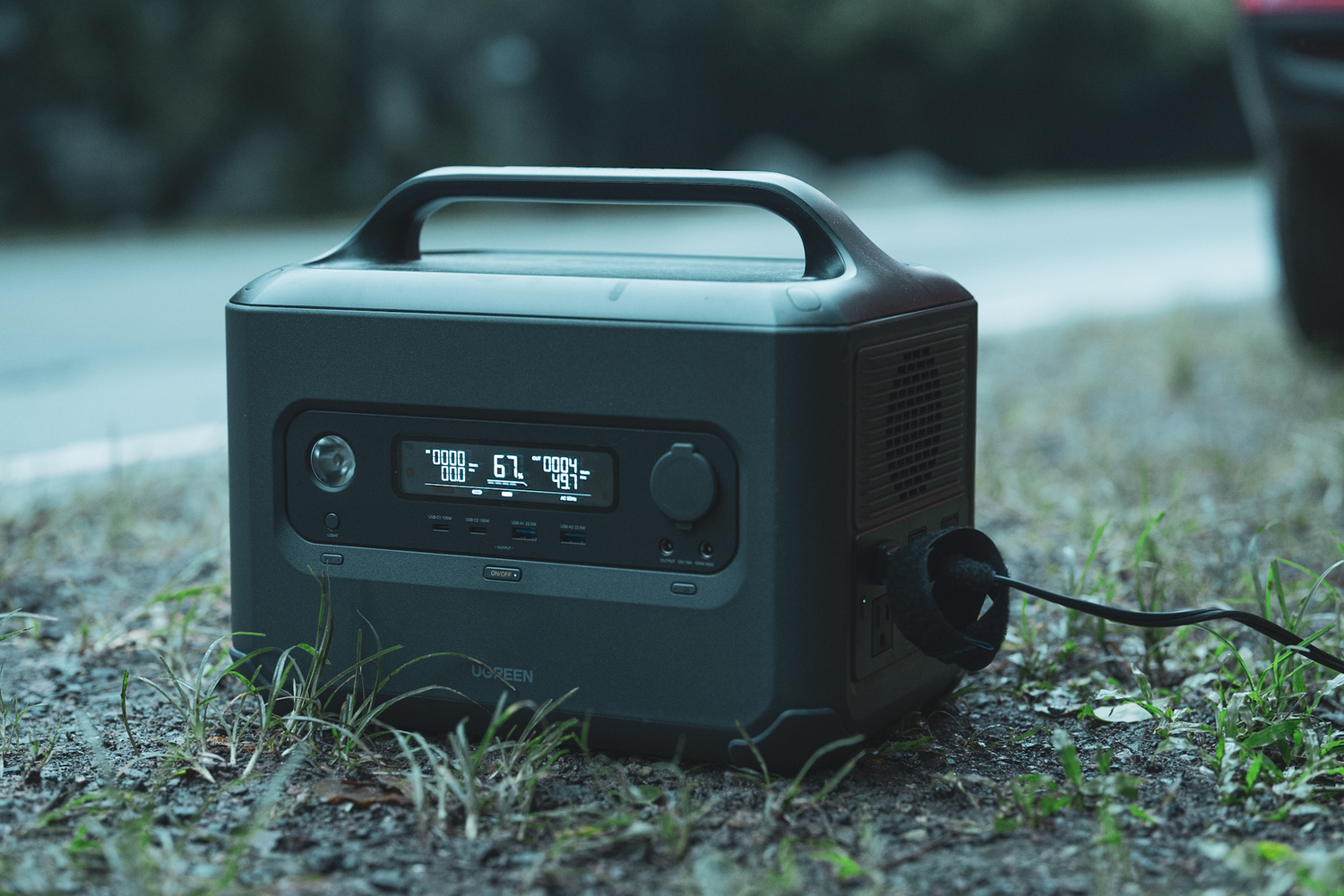
For outdoor on-location shoots, having a portable power source can allow you to achieve even the most complex lighting setup while away from any socket. Depending on the power consumption, this can power even six continuous lights at even 200 watts each. A single 200-watt LED light source consumes about 10% of the capacity in 30 minutes, which roughly gives almost 5 hours with that single light setup. Consequently, using less power or smaller lights would generally mean more time and more lights to be used at once.

This power station can also be used to recharge gear and other portable electronics for long periods of being away from any power sources. For long productions being shot outdoors or for outdoor recreation, this much power reserve can be a lot of help. Camera batteries generally have about 12-20-watt-hour capacity, which means that any realistic number of camera batteries that would have to be recharged can be covered. Laptops have about 50-90-watt-hour batteries that can be recharged for 11-20 cycles if used exclusively for that purpose.

Aside from outdoor use, the Ugreen PowerRoam 1200 can be a great back-up source during power interruptions. The fact that it can be charged using solar panels is also a great way to reduce general consumption. Whether for powering lights in a studio or to power essential appliances at home, it can step up to provide necessary power for a considerable amount of time depending on the consumption of what’s being powered.
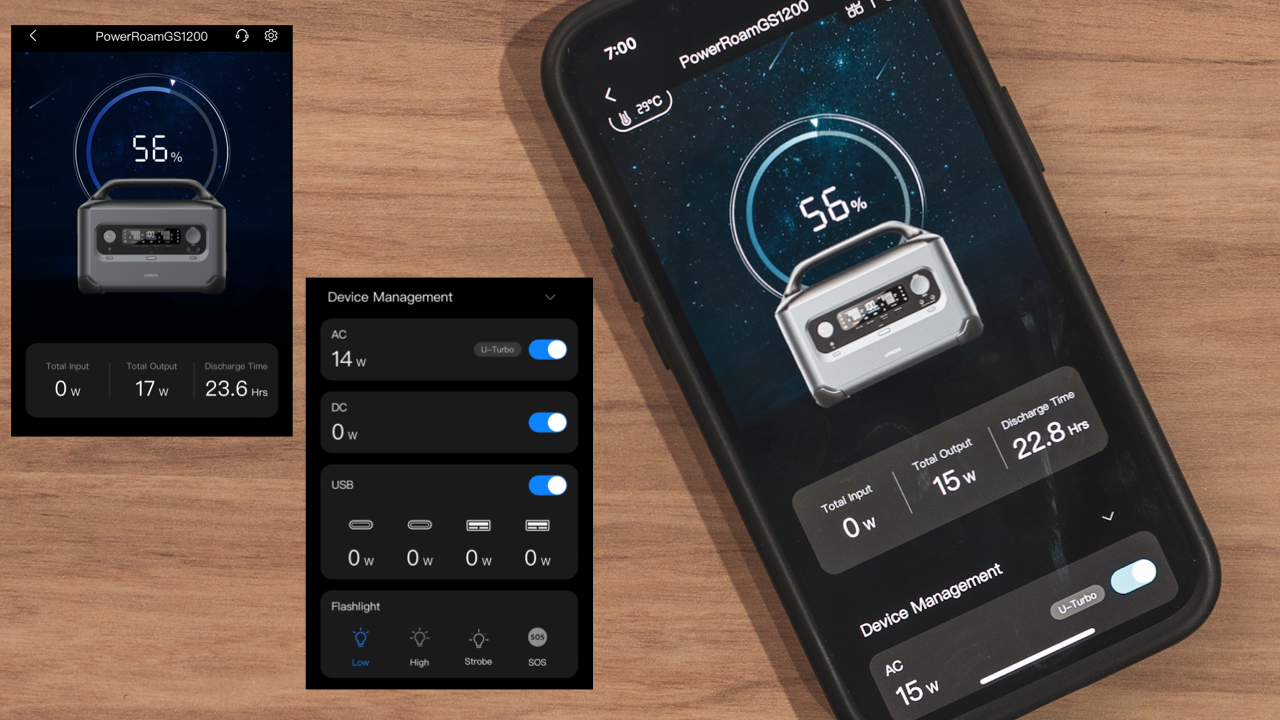
Lastly, it also has some nice and handy emergency features that can help even when the battery’s capacity has been fully consumed. Emergency mode uses a reserve battery that can power the built-in light for up to 7 hours and/or provide charge a typical smartphone battery for emergency use.

The Ugreen PowerRoam packs a considerable amount of power in a portable though still sensibly heavy device. It offers 13 different ports (with 6 various ways to connect) that are compatible with most modern electronics, lights, and appliances. On top of that, it comes with a user-friendly way to control and monitor usage through the convenient smartphone app and has handy features that can provide solutions in emergency situations.
What I Liked
- Great battery capacity with adaptive power output
- 13 ports that cover all possible device requirements
- Convenient straight-forward user experience
- Smartphone app control and monitoring option
What Can Be Improved
- Provisions for utility straps or carrying bag for additional ways to carry
- Adaptive 100-240V input voltage for better compatibility
- Smartphone alerts or notifications when fully charged or nearing exhaustion
Purchase
You can purchase the PowerRoam 1200 here.







This look like a copy of the current EcoFlow range which I trust impoliticly with electrical equipment. Ive never heard of the brand in this article, but I am concerned that it seems like a copy of an existing EcoFlow product.
Many companies are trying to copy ecoflow, mainly because they used a very high starting price, thus many are rushing to undercut them by a tiny amount, while pricing is still very high for the hardware, it is good that there is more competition.
These devices offer a good range of functionality, especially in the case of being able to charge and use them at the same time, thus outside of portable use of various devices, in the case of longer term power outages due to a storm, with a good portable solar panel setup, you can effectively maintain basic use of a non-gaming laptop for multiple days.
The only major issue I have with these devices, is the anti-consumer practice of taking design steps to prevent repair, especially when it comes to replacing the battery. Since these are utilitarian appliances, this is not something that someone will replace with the latest model every few years like a smartphone. Many battery cycle life ratings are based on very controlled charge and discharge conditions that don't reflect real world use cases. This is why a smartphone even when a company advertises 1500 charge cycles on a smartphone battery, by the time you have used it regularly for 2 years, the battery life is a lot less than 80% of the capacity it had when new. This is a combination of quick charging, more rapid drain, wider temperature range, and aging which is not tested in the datasheets. Batteries lose capacity with charge cycles, as well as with time.
Furthermore the reason why battery makers will often test down to 80% capacity, is because for quality batteries, after reaching around 80%, the rate of capacity loss increases rapidly. This is why you can have a phone that looses capacity gradually over 18-24 months, and then rapidly lose capacity over the next 6-12 months to a point where you are charging it multiple times per day.
For expensive power banks that serve a utilitarian purpose, I would like to be able to quickly replace the worn out batteries myself for a tiny fraction of the cost, rather than buying an entirely new unit with a massive profit margin attached to the price tag.
I need some advice for a friend who is locked in a battle with an ice rink's insurance company. We runs an event company that shoots hockey tournaments. He lights the rink is six Alien Bee 1600's, at half-power plugged into AC sockets along the back wall of the rink. He's been using this setup at this rink for over 12 years with no issues. During a recent inspection by a rep from the rink's insurance provider, the inspector said that if he continued to use these lights, they would require each light be plugged into its own dedicated circuit, with conduit and plug run to the light's location. One thought I had was to use something like an Ecoflow (or two) to act as a "buffer" between the lights and the rink's AC power. But one question is: Are there units that you can both charge and use at the same time?
Some ECOFLOW models can be used and charged at the same time, it all depends on what the maximum wattage required for each unit you required. But my Delta 2 powers my 600w good with ease
As someone who lives in PR and the power drops out every few days, I need one of these.
If using a power station as a backup for power outages, if they can last a while, you can connect multiple solar panels in parallel to maximize the amount of time the power station spends at its max charge rate.
One annoying thing about power stations is that thru only get their full charge at the max voltage for example, if they list 12 to 30V at 3.5 amps for the smaller 100 watt charge units, then you only get a 100 watt charge rate at 30V.
With multiple panels, you can do things like 2 banks of 2 panels in series, before being paralleled to the power station, if the voltage doesn't exceed the max input. Even if all of the amperage cannot be used, since panels will almost never reach their max amperage output for more than a few minutes per day, many people will add more panels to keep their charge system at max input for more of the day.
I wonder if a vehicle like an F-150 Lightning makes sense for high earners in PR? Hook it up to the house to charge, when power goes out, plug it into the house and it'll power a large home for a couple days, small homes up to a week.